Jane Friedman's Blog: Jane Friedman, page 158
September 22, 2014
How to Avoid the “Extra” Work of Social Media
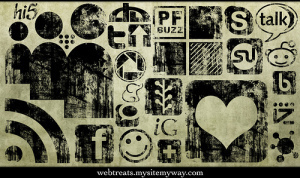
by webtreats / via Flickr
Over the weekend, I had the pleasure of speaking at a one-day publishing event hosted by Blurb in Brooklyn, NY. My topic was the art & business of building a platform, which included about 5-10 minutes of commentary on social media (out of a full hour).
As often happens, most audience questions were about social media, and my one-on-one conversations with authors afterward focused on social media. They confided that they aren’t interested in social media nor do they see the benefit of the extra work presented by it.
While I don’t think social media use is mandatory, you can set up an significant challenge for yourself if you exclude it from your arsenal of tools. Many think they’re excluding it from their arsenal of marketing tools (or just declining to engage in self-promotion). Perhaps. But shift your perspective just a bit, and it turns out you’re excluding it from your arsenal of creative writing and publishing tools.
Social media is a form of content, and can be seen as micro-publishing. Each post is sharing a tiny bit of your story, message or perspective—possibly something informative or inspiring. The posts might end up being part of a larger work. They might be daily creativity experiments. And they might offer you insight into how your audience thinks and engages with your work.
Consider:
Nonfiction writers who author blog posts (part of the social media universe, in my view) compile and edit them into a larger publication.
Artists or illustrators who post quick images on Pinterest or Instagram and later publish a high-quality print book collection that includes some of those images.
Fiction writers who post about their research and inspiration for a novel, giving readers a sneak peek of what’s to come.
Or, think of it like this: You’re micro-publishing and sharing things you’re happy to give away, and that reach a very wide number of people, because they can spread freely. These things are your “cheese cubes”—but they’re part of a much bigger cheese you have in store. The people who become invested in your work and your message will buy the premium cheese basket: the final, polished, very intentional work with the highest value.
Some author examples to consider:
Debbie Ohi posts a daily doodle on social media; it’s part of her creative practice.
Jeanne Bowerman started a Sunday night Twitter #scriptchat to learn about scriptwriting, and ended up becoming an expert herself in the topic she set out to study.
Robert Brewer issues a poem-a-day challenge to get himself and his community producing poetry.
I post publishing and media infographics on Pinterest to keep tabs on industry change, and use them as reference points in my talks, and also to benefit others.
Are these things “extra” work? Not really; in the cases above, they’re the very heart of the creative work. They are digitally native forms that usually involve sharing the work before it’s part of something final or cohesive. This is often rocket fuel for your art; see Austin Kleon in his recent release, Show Your Work. Social media doesn’t have to feel like a drag on your time when it’s not separate or devised in isolation from your “real work.”
I’ll leave you with the words of Richard Nash, who I recently interviewed for the upcoming Fall 2014 issue of Scratch magazine. We talked about writers who say (basically), “I just want to write,” and would rather not be distracted by non-writing activities. He says:
No one wants to just sit and write! Not even Beckett didn’t want to just sit and write—seriously! If Beckett can’t abide just sitting down and writing, then any writer can find emotional and cultural stimulation by engaging with society. The two are not mutually exclusive.
Whatever time limitations you face or whatever artistic goals you have, I believe the really meaningful (platform-building) social media activity draws on the same creativity and imagination that’s part of your “serious” work.
The post How to Avoid the “Extra” Work of Social Media appeared first on Jane Friedman and was written by Jane Friedman.
September 18, 2014
For Publishers to Thrive Requires a Kuhnian Paradigm Shift
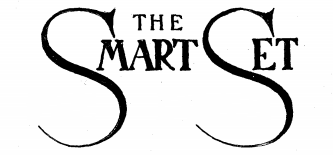
Welcome to the weekly The Smart Set, where I share three smart pieces worth reading about the publishing and media industry. I also point to issues and questions raised, and welcome you to respond or ask your own questions in the comments.
“To seek: to embrace the questions, be wary of answers.”
—Terry Tempest Williams
Amazon, Publishers, and Readers by Clay Shirky
Why Publishers Should Listen to Clay Shirky by Brian O’Leary
Big Publisher Bashing Again With Fictional Facts by Mike Shatzkin
This week’s round-up focuses on a single piece by NYU professor and provocateur Clay Shirky, which garnered responses from around the web, including pub industry insider-consultants Brian O’Leary and Mike Shatzkin.
First, the crux of Shirky’s argument: Amazon ultimately has a positive influence on book sales and book reading because it improves the availability of books; traditional publishers need to find better, more creative ways to make money off improved access to books, rather than focusing on restricted access and higher prices. My favorite part of his essay:
To criticize Amazon, the publishers and their defenders must simultaneously insist that literature is essential for society, and that a sudden increase in its availability would be a catastrophe. … The threat Amazon poses to our collective self-regard is the usual American one: The market is optimized for availability rather than respect. The surface argument is about price, but the deep argument is about prestige. If Amazon gets its way, saying, “I published a book” will generate no more cultural capital than saying “I spoke into a microphone.”
His full essay is worth the 15 minutes—go read it and pay particular attention to the Bourdieu reference. I’m in 110% agreement there’s too much hand-wringing and angst over this Myth that traditional publishers are needed arbiters of taste and somehow protect culture through gatekeeping activities. (The flip side of this concern: How will we ever survive the firehose of low-quality dreck now being published? But focusing on that is a distraction at best, and elitist claptrap at worst, as Shirky points out.)
O’Leary responds to Shirky and nods his head in agreement:
The roles that publishers once played as gatekeepers, as arbiters and as “repositories of culture” are diminishing by the week. That’s happening partly through Amazon, but it’s also happening outside it. For a reality check, talk to the people who write and read on Wattpad. … Shirky’s arguments are uncomfortable, sometimes personally so, and they don’t sit well inside companies that sell millions of dollars of books every year. That’s a pretty good set of reasons to take them seriously.
Shatzkin responds very differently, and criticizes Shirky for how he lays out the context or background for his argument, particularly Shirky’s characterization of the effect of digital rights management (DRM) and Big Five publishers’ efforts to control pricing. However you’d like to pick apart fact from fiction here—and we’re talking about very insidery, deep-in-the-weeds stuff that would be hard for the average author or reader to understand—I don’t find these points materially address the larger and more important point Shirky is making about availability and prestige.
Put another way: O’Leary’s response looks at the forest, while Shatzkin examines the veins on the leaves of the trees in the forest. I’m more interested in whether Shirky’s depiction of the forest is accurate, and I think it is.
I believe that Shirky responded to Shatzkin’s blog post, but the comments would not load during my visit.
Update: The best comment thread you can find on this matter is at Brian O’Leary’s post, where very smart people weigh in and call this difference of agreement what it is: a Kuhnian paradigm shift.
Thoughts & questions:
How much do you agree with Shirky’s critique of traditional publishing?
How much do Shatzkin’s facts matter, or does he miss the forest for the trees?
The post For Publishers to Thrive Requires a Kuhnian Paradigm Shift appeared first on Jane Friedman and was written by Jane Friedman.
For Publishers to Thrive: Make a Business Out of Improved Access to Books

Welcome to the weekly The Smart Set, where I share three smart pieces worth reading about the publishing and media industry. I also point to issues and questions raised, and welcome you to respond or ask your own questions in the comments.
“To seek: to embrace the questions, be wary of answers.”
—Terry Tempest Williams
Amazon, Publishers, and Readers by Clay Shirky
Why Publishers Should Listen to Clay Shirky by Brian O’Leary
Big Publisher Bashing Again With Fictional Facts by Mike Shatzkin
This week’s round-up focuses on a single piece by NYU professor and provocateur Clay Shirky, which garnered responses from around the web, including pub industry insider-consultants Brian O’Leary and Mike Shatzkin.
First, the crux of Shirky’s argument: Amazon ultimately has a positive influence on book sales and book reading because it improves the availability of books; traditional publishers need to find better, more creative ways to make money off improved access to books, rather than focusing on restricted access and higher prices. My favorite part of his essay:
To criticize Amazon, the publishers and their defenders must simultaneously insist that literature is essential for society, and that a sudden increase in its availability would be a catastrophe. … The threat Amazon poses to our collective self-regard is the usual American one: The market is optimized for availability rather than respect. The surface argument is about price, but the deep argument is about prestige. If Amazon gets its way, saying, “I published a book” will generate no more cultural capital than saying “I spoke into a microphone.”
His full essay is worth the 15 minutes—go read it and pay particular attention to the Bourdieu reference. I’m in 110% agreement there’s too much hand-wringing and angst over this Myth that traditional publishers are needed arbiters of taste and somehow protect culture through gatekeeping activities. (The flip side of this concern: How will we ever survive the firehose of low-quality dreck now being published? But focusing on that is a distraction at best, and elitist claptrap at worst, as Shirky points out.)
O’Leary responds to Shirky and nods his head in agreement:
The roles that publishers once played as gatekeepers, as arbiters and as “repositories of culture” are diminishing by the week. That’s happening partly through Amazon, but it’s also happening outside it. For a reality check, talk to the people who write and read on Wattpad. … Shirky’s arguments are uncomfortable, sometimes personally so, and they don’t sit well inside companies that sell millions of dollars of books every year. That’s a pretty good set of reasons to take them seriously.
Shatzkin responds very differently, and criticizes Shirky for how he lays out the context or background for his argument, particularly Shirky’s characterization of the effect of digital rights management (DRM) and Big Five publishers’ efforts to control pricing. However you’d like to pick apart fact from fiction here—and we’re talking about very insidery, deep-in-the-weeds stuff that would be hard for the average author or reader to understand—I don’t find these points materially address the larger and more important point Shirky is making about availability and prestige.
Put another way: O’Leary’s response looks at the forest, while Shatzkin examines the veins on the leaves of the trees in the forest. I’m more interested in whether Shirky’s depiction of the forest is accurate, and I think it is.
I believe that Shirky responded to Shatzkin’s blog post, but the comments would not load during my visit.
Update: The best comment thread you can find on this matter is at Brian O’Leary’s post, where very smart people weigh in and call this difference of agreement what it is: a Kuhnian paradigm shift.
Thoughts & questions:
How much do you agree with Shirky’s critique of traditional publishing?
How much do Shatzkin’s facts matter, or does he miss the forest for the trees?
The post For Publishers to Thrive: Make a Business Out of Improved Access to Books appeared first on Jane Friedman and was written by Jane Friedman.
September 16, 2014
The Evolving Role of the Literary Agent
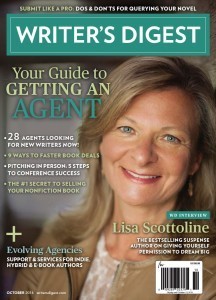
Writer’s Digest (October 2014)
In the most recent issue of Writer’s Digest magazine, you’ll find my feature article, “The Evolving Agent.” I discuss how literary agents’ business models and services are changing to fit the needs of their clients, who are increasingly self-publishing or choosing hybrid paths.
The article covers:
the value of agent-assisted self-publishing
what happens when agents use third parties to assist you (e.g., Argo Navis or Amazon White Glove)
specific agencies that assist with self-publishing and what their terms are
what questions to ask an agent before having them assist with self-publishing
Regarding that last point, here are a few of those questions to ask:
Who covers the costs associated with self-publishing? In most cases, the author covers the cost, but sometimes the agent will cover expenses and deduct them from the author’s earnings.
Who controls the rights to the self-published work? (It should be the author.)
How long must you commit to giving the agent 15 percent of sales on the work? (It shouldn’t be indefinitely.)
How/when can the agreement be terminated?
To read the full article, buy the October 2014 issue of Writer’s Digest, available in print or as a digital download.
For additional context, I also highly recommend reading:
Agent-Assisted Self-Publishing and the Amazon White Glove Program by Melissa Foster
Why I Left My Agent and New York Publisher by Claire Cook
The post The Evolving Role of the Literary Agent appeared first on Jane Friedman and was written by Jane Friedman.
September 15, 2014
How I Recovered From 3 Years of Chronic Back Pain

As some of you may recall, I’ve been seeking solutions to my chronic back pain, which I assume is partly related to my writing-and-sitting-at-the-computer lifestyle since the mid-1990s.
You can read the first installment here.
I’m very grateful to say that I’ve been pain-free for six months and have returned to long-distance running. (I can now run for a full hour and am logging a gentle 10 miles a week.)
I’d like to share what worked for me—especially since so many things did not work, and I know what a frustrating problem this can be, with little hope. I see the updates of friends and colleagues who suffer just as I did.
I’ll first offer some context on my particular history, but if you’d rather just go straight to the solutions, scroll down to the heading What Worked to Eliminate My Back Pain.
The Specifics of My Situation
I think it’s important to point out a few things about my own experience.
I’ve been lucky to have no other significant health problems or limitations during my life. It’s rare for me to see a doctor more than once a year
I was an avid runner throughout my 20s, and had some minor trouble now and again with sciatica, almost always as a result of overtraining. Symptoms would disappear with rest, and regular weight training was the best prevention of all.
I had a vicious and debilitating case of sciatica in 2011 that seemed to come out of nowhere, since I hadn’t been regularly running for several years. I went to physical therapy, but didn’t take it seriously, only doing the exercises during the appointments. I assumed with time I would fully recover and go back to normal. This was probably my most serious mistake of all, because I never went back to normal. While the sciatica symptoms disappeared, I developed low back pain that was at its worst overnight and in the morning, and became gradually worse over time.
What Didn’t Work to Fix My Back Pain
Waiting. Two years of being very patient didn’t help. When I suffered a pinched nerve in my shoulder (with no discernible cause) that kept me home from work, I knew the problem was only becoming more serious, and that waiting it out wasn’t an option.
My primary physician. The first thing I did was visit my doctor. She asked if I was exercising (I wasn’t), said that I should, then ordered X-rays. She said I had disk degeneration, and I anticipated that her next steps would involve injections or surgery. I didn’t like where the situation was headed, especially since I felt too young (36) for those options.
Treadmill desk. I felt that sitting at my desk all day and bad posture were long-term contributing factors to where I had ended up, so I started using a treadmill desk for part of my work day. It had no effect.
The Gokhale Method. To learn better posture, I took a weekend intensive workshop on The Gokhale Method. This was excellent at bringing awareness to my bad habits, but it didn’t eliminate the back pain.
Strength training, stretching, and cardio. After seeing my doctor, I joined a gym and started strengthening my back with the help of a personal trainer. I undoubtedly became stronger, but it didn’t affect the pain. I also regularly participated in spinning, pilates, and yoga. It was good to be exercising again—and the back pain didn’t prevent me from exercising—but the exercise didn’t improve my situation either.
What Worked to Eliminate My Back Pain
Consulting with an expert in traditional and alternative medicine. When I posted about my situation in the summer of 2013, I was lucky that colleague and friend Anne Carley (who lives in the same city that I do) wrote me and recommended a local independent health professional who has a holistic, alternative approach to medicine but a traditional background. I went to see her immediately and described my history and situation. She examined me and recommended a physical therapist who works to address problems holistically—since conventional physical therapy focused only on fixing the back pain may not in fact resolve the problem.
Working with a physical therapist (PT) who also specializes in the Egoscue Method. After a 30-minute evaluation by the PT, I was given a daily 20-minute passive stretching routine that was primarily based on the Egoscue Method. Every 2-4 weeks, I would see the therapist again so she could evaluate progress and give me a new set of exercises to help me further advance. The pain began to lessen.
Structural Integration. After four months of seeing the physical therapist, she recommended I also see a massage therapist who specializes in structural integration, a system of body work. This involved a series of 10 sessions of deep mysofascial work and movement education. The goal was to balance my body’s musculature and connective tissues and, through better alignment, reduce any strain on my structure. The results felt like a near-miracle. Even if you know you have bad posture or that your muscles are wound tight, that doesn’t mean you can easily fix it, no matter how much you stretch. The structural integration was like pushing the “reset” button on years of bad habits, and allowed all the other activities—physical therapy, yoga, and exercise—to do their job better.
If you’ve found yourself struggling with back pain or other types of chronic pain related to muscles, joints, or connective tissue, I highly recommend looking for a physical therapist with a holistic approach, as well as trying a structural integration session to see if it might press the reset button for you as well. The results have been lasting; my last appointments were in the spring, and over the summer I started running again without any problems. It was a long road, but I have my health back.
The post How I Recovered From 3 Years of Chronic Back Pain appeared first on Jane Friedman and was written by Jane Friedman.
September 11, 2014
How University Presses Need to Improve Their Marketing [Smart Set]

Welcome to the weekly The Smart Set, where I share three smart pieces worth reading about the publishing and media industry. I also point to issues and questions raised, and welcome you to respond or ask your own questions in the comments.
“To seek: to embrace the questions, be wary of answers.”
—Terry Tempest Williams
Direct-to-Consumer Marketing for University Press Books by Joseph Esposito
Publishing industry consultant Joe Esposito has released an in-depth, researched report on what’s happening (or not) with academic publshers’ direct marketing to readers. (Download the PDF.) Such sales are only at 1-3% of their business today, and Esposito argues there’s potential for a much higher direct-to-consumer sales percentage if presses could/would:
More fully understand web marketing and optimize their websites for building traffic
Do better “marketing in the stream” (better use of social media tools)
Become skilled at content strategy & content marketing
Esposito concludes with the following:
The conceptual issue facing university presses is whether they should aspire to be universal. The case for specialization is strong and becoming stronger. This in turn puts pressure on the delicate ecosystem in which presses operate today, in which they attempt to support many of the disciplines of importance to their parent institutions, especially in the humanities. We may be entering the era of the non-universal university press, and it is the opportunity in direct-to-consumer marketing that will lead us there.
Thoughts & questions:
I’ve long been fascinated by the question of how generalist publications or publishers hold their own and grow in the digital era—or what a successful strategy looks like for a publisher, newspaper, or magazine that caters to a broad or general audience. (How necessary is it to specialize?)
Tangent: there was an interesting article about the success of The Daily Mail (UK) in building a digital presence that’s different from its print presence, but just as successful in reaching or appealing to a mass audience. (There was even a New Yorker profile about their success.)
Proving Legacy Media Can Flourish In A Digital Age, an interview with The Atlantic’s Bob Cohn by Mr. Magazine
Mr. Magazine interviews Bob Cohn, the CEO of The Atlantic, which is widely perceived as a success story for legacy publications transitioning to digital business models and platforms. Cohn discusses the print-digital relationship:
The power of The Atlantic in print drives our digital success in a couple of ways. First, the actual print stories which we post to the website do very well. The cover story outperforms most other stories in most months, not all stories, but most … we post more stories in a day to Atlantic.com than the monthly magazine creates. So there are so many more digital stories, but the magazine pieces tend to outperform. … It is proof that the magazine stories can do very well in a digital environment.
I think that we approach this as two separate products with a common brand. We actually have three products; the print product, digital product and the live event product. And those are all tied to a core brand, but they express themselves very differently.
Thoughts & questions:
From Cohn, I find this very wise: “[Print and digital] express themselves very differently.” You’d think that would be a given (even stupidly obvious), but at many publications, I’ve discovered insistence that digital content behave and/or be executed in exactly the same way as the print content.
A More Thoughtful Amazon by Craig Mod
Mod proposes a fix to the unfair reviews that get posted on Amazon: if a reviewer is voted as “unhelpful” often enough, the rating of their account can drop very low indeed. Amazon could use this data to give more weight to the more helpful reviews and reviewers “and cancel out five thoughtless trolls.” So why don’t they?
A good question.
The post How University Presses Need to Improve Their Marketing [Smart Set] appeared first on Jane Friedman and was written by Jane Friedman.
September 10, 2014
How to Use NoiseTrade Books as a Strategic Marketing Tool
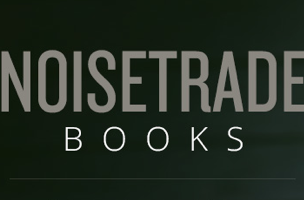
Note from Jane: I am very grateful to Ed Cyzewski (@edcyzewski) for today’s guest post, where he shares valuable insights about book marketing via NoiseTrade (not to mention email newsletters and ebook giveaways). If you’d like to share insights from your book marketing experiments in a guest post, please contact me.
First, a Bit of Background
In 2012 I was in-between book projects, and I had an idea for a short ebook on creativity, so I decided on a whim to write it, put a cover together with a high-quality image, and release it for free during a 3-day KDP Select offer. I even guest posted on this blog about it.
Thanks to several generous shares of the ebook by folks like Joanna Penn and the 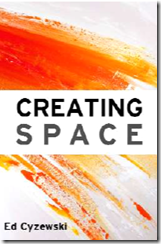 momentum of the Kindle bestseller lists, Creating Space landed on the “Creativity” and “Writing” bestseller lists (which, by the way, used to be listed next to the paid bestseller list) and spent a two days in the Kindle top 100 free ebooks. About 4,800 readers downloaded the ebook in three days (I didn’t know then that I should have probably used all five days at once).
momentum of the Kindle bestseller lists, Creating Space landed on the “Creativity” and “Writing” bestseller lists (which, by the way, used to be listed next to the paid bestseller list) and spent a two days in the Kindle top 100 free ebooks. About 4,800 readers downloaded the ebook in three days (I didn’t know then that I should have probably used all five days at once).
After the promotion, I kept the price at $.99 since it’s short, and readers kept downloading it, typically noting its brevity as a virtue in reviews. However, I couldn’t stop thinking about those 4,800 downloads. Despite my ads and author information in the back of the book, I still didn’t have any way to contact any of those readers again.
While authors have successfully used free promotions to sell other books or to gain temporary exposure on bestseller lists (see Let’s Get Visible for more on that), I really wanted to find a way to offer at least a few of my books in a “pay what you want” model that relies on collecting email addresses as the primary form of payment.
That model existed—it just didn’t offer eBooks. NoiseTrade.
At the time, NoiseTrade functioned strictly as a music download website, and offered the precise model I’d been looking for: users pay what they want for an entire album (typically $0-$6), and then they enter their email address and zip code. They download the album and have the option of tweeting or sharing on Facebook about their new tunes.
It had been established as an alternative of sorts to Spotify by Derek Webb, who felt the paltry royalties of Spotify were not worth the same as an email address that could be turned into future sales. It made sense as a long-term strategy. Everything I’d seen about book marketing and marketing in general revolved around collecting email addresses (see Your First 1,000 Copies for more on that).
However, behind the scenes, Webb had been working on an ebook branch of his music website.
By the time I learned of NoiseTrade Books, it was 2014 and I had a book set for release in August. In May I decided to see whether NoiseTrade alone could catch some extra email addresses for my book launch.
I chose my self-published book A Path to Publishing as my experiment. I’d published it in 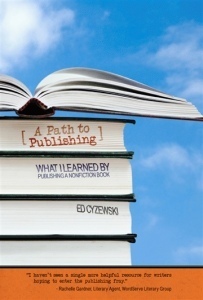 2010 and had pursued a traditional marketing plan, which I followed with several KDP Select free price promotions. Everyone in my network who was going to buy or download it had already picked it up. I pulled it down from KDP Select and kept the ebook priced at $2.99, which was still a great deal for a full-length book. A Path to Publishing would test the response of NoiseTrade users for a niche nonfiction book.
2010 and had pursued a traditional marketing plan, which I followed with several KDP Select free price promotions. Everyone in my network who was going to buy or download it had already picked it up. I pulled it down from KDP Select and kept the ebook priced at $2.99, which was still a great deal for a full-length book. A Path to Publishing would test the response of NoiseTrade users for a niche nonfiction book.
How far could NoiseTrade take me with my book marketing? I’m sharing my results and what I tried so that you can develop your own experiments.
I offer this disclaimer: I’m a writer, not a marketing expert. I have no way of knowing exactly how many NoiseTrade users ended up buying my ebooks on Amazon, but I did add some data from my email campaigns at the end of the post. If you’d have done something different, please mention it in the comments so everyone else can learn from my mistakes!
My Strategy for Using NoiseTrade Books and What Happened
For starters, I uploaded the A Path to Publishing ebook files to NoiseTrade and added the endorsements, description, and reviews. I set up an author profile, and hit publish. The book showed up right away on the site as a few users downloaded it. None left tips.
A few days later, a rep from NoiseTrade suggested I include my book in the NoiseTrade mailing list that reaches roughly 30,000 inboxes. There were three tiers on the list: the main featured book, a secondary ad slot, and then six book cover images on the third tier. He offered me half price on the third tier, which also came with a little over a week as a new and notable book on the NoiseTrade home page.
The price: $125. Why not? I know that self-publishing folks generally discourage spending money on advertising, but I wanted to see how far NoiseTrade alone could take me. Why not go all in? Or at least, go all in on the third tier?
The first days of the promotion pulled in about 200 email addresses and $20 in tips. As of this writing, A Path to Publishing alone pulled in 325 email addresses and $42 in tips.
Satisfied that I could at least give my mailing list a boost, I expanded my offerings into Christian nonfiction by uploading an out-of-print Bible study guide. I didn’t buy advertising for the study guide, but fewer people in my network had seen my last free promotion for it back in 2009. By simply uploading the ebook and sending out a few social media mentions, it was downloaded 375 times and collected an additional $24 in tips a month before my book released in August.
While I didn’t make my advertising money back, I’d still collected quite a few email 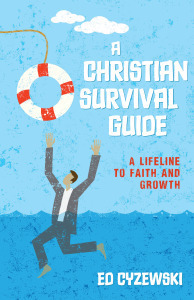 addresses. In early August my publisher posted on NoiseTrade a two-chapter excerpt of my new book, A Christian Survival Guide—a book with a tongue-in-cheek title that I’ll refer to as CSG. That pulled in an additional 325 email addresses before our big promotional push on August 18. We split the cost for another $125 promotion, but only made a laughable $4 in tips—clearly folks weren’t interested in paying for part of a book.
addresses. In early August my publisher posted on NoiseTrade a two-chapter excerpt of my new book, A Christian Survival Guide—a book with a tongue-in-cheek title that I’ll refer to as CSG. That pulled in an additional 325 email addresses before our big promotional push on August 18. We split the cost for another $125 promotion, but only made a laughable $4 in tips—clearly folks weren’t interested in paying for part of a book.
At this point, I had pulled in 325 email addresses for people interested in my publishing book and around 700 for my Christian nonfiction books.
I’m not great at math, but I can see that 700 downloads are not the same as 4800 downloads using Amazon’s Kindle Select—downloads that can get you into the recommendation engine for future sales. However, I had just beefed up my email list by adding two tidy little segments: one for publishing books and one for Christian living books. Would the NoiseTrade users open my emails and convert during release week?
How I Leveraged NoiseTrade Reader Emails
I experimented on the conversion rate of the NoiseTrade users by sending another free ebook, a brief guide on blogging, to the publishing list. What happened?
75% opened the email
25% downloaded the ebook
10 unsubscribed
That wasn’t bad. Mind you, these users were still downloading a free ebook. However, they weren’t unsubscribing in droves. What if I could leverage my NoiseTrade Christian nonfiction users looking for bargains to get more exposure for my upcoming Kindle promotion for my CSG book?
I don’t know if I played this right, but I decided to try to leverage their interest to raise my profile as an author in general and to then drive downloads/sales for my new book release during the promotional period on Amazon that my publisher had planned.
The week before release, I offered two ebooks for free via Kindle Select—one for each list segment. Each ebook is short and to the point with great reviews, and each had ads in the back for additional books. I merged my Christian nonfiction NoiseTrade readers with my existing mailing list, and I was able to drive a short ebook on prayer onto Amazon’s Christian Prayer bestseller list. The publishing list received a link to Creating Space, which also claimed the top spots in its categories.
On the following week, my publisher released CSG with a free Kindle promotion on Monday, followed by four days at $2.99 before increasing to $9.99. I once again sent the deals to my NoiseTrade and existing email lists, and well over 40% converted. Many e-newsletter recipients also shared my suggested tweet about the promotion. In one day my book rose to #194 in the free Kindle store, which didn’t seem bad considering about half of the titles under 200 were erotica or romance.
During release week the ebook for CSG took the top spot for the popular Christian Discipleship category on Amazon for about a week, and lingered in the top ten into the following week when the price rose to $9.99.
I don’t have the sales or download numbers yet for our promotion. I don’t know if my publisher benefitted from the ebook promotion. I do know that my new book got a lot of exposure and is being recommended all over the place.
The value of building an email list through NoiseTrade Books will certainly vary depending on your content and your goals. The upside is that it’s easy to get your work in front of people who are interested in ebooks and are giving permission to contact them in the future. In my experience, they generally want to hear from you.
However, you are also building an email list full of ebook bargain hunters. So you may not be able to convert a higher priced ebook in the future. I mainly needed those 700 Christian nonfiction NoiseTrade readers to download my CSG ebook while it was discounted. They gave me a huge bump that supplemented my guest posts and social media campaign during release week.
My Future Plans for NoiseTrade Books
I plan to follow the lead of authors who create brief, high-value nonfiction books, study guides, or short story collections to promote their full-length books. I tracked the most downloaded books on NoiseTrade for July and August, and I saw ebooks like 25 Marriage Hacks pile up downloads (I suspect it was the most for a 30-day period this summer) while drawing attention to the author’s forthcoming full-length book on marriage. For another example, Allison Vesterfelt had already published a book, but she drew additional attention to it by publishing a related ebook short on NoiseTrade.
In addition, now that I have three ebooks listed on NoiseTrade Books, I get a steady stream of new email addresses in addition to subscribers I gain through my website. Without any promotions running, I still pick up between one and six email addresses a day through NoiseTrade.
Should You Try NoiseTrade Books?
If you have a book coming out and you plan to do a price promotion at some point, then a short ebook project on NoiseTrade could give your email list a nice bump. However, it seems that, at least for now, NoiseTrade is mostly driven by fiction, business nonfiction, and religious/self-help nonfiction.
Like any marketing tool, your audience and topic will determine what will be most effective. I’m not giving up on Kindle Select, but I’m also glad I have an alternative in NoiseTrade Books that makes it easier to build my email list. (Below I’ve shared the specific results of my email sends.) If the marketing experts are correct about the importance of email, NoiseTrade Books may be one of the best new marketing assets for authors.
Email #1 (July 3, 2014): Sent to Publishing NoiseTrade List
Objective: Keep in touch, remind them that they’ll receive emails from me now. Emailed those who downloaded A Path to Publishing with additional ebook that regular e-newsletter subscribers usually receive.
75% opened
25% clicked through for additional eBook download
10 unsubscribes
Email #2 (August 12, 2014): Sent to Publishing NoiseTrade List
Objective: Drive downloads of my free Kindle Select ebook, Creating Space, and raise awareness of my other books on Amazon.
67% opened
40% clicked through
KDP Select Promotion: 3,850 downloads
Email #3 (August 12, 2014): Sent to Christian Nonfiction NoiseTrade List
Objective: Exposure for my free Kindle Select eBook Why We Run from God’s Love, a book about prayer, and raise awareness about my other books on Amazon.
418 subscribers
2% opened
6% clicked
6 unsubscribed
KDP Select Promotion that week: 1,500 downloads
Email #4 (August 18, 2014): Sent to Christian Nonfiction NoiseTrade List
Objective: Increase downloads and social media shares for the release week of my new book A Christian Survival Guide.
591 subscribers (the email list through NoiseTrade grew in a week.)
53% opened
18% clicked
12 Unsubscribed
Final NoiseTrade Stats for June–August 2014
1,015 downloads
$70 in tips as of August 23, the end of release week for A Christian Survival Guide
The post How to Use NoiseTrade Books as a Strategic Marketing Tool appeared first on Jane Friedman and was written by Ed Cyzewski.
September 9, 2014
Self-Hosting Your Author Website: Why and How to Do It

by Tim Dorr / Flickr
Note from Jane: This Thursday, I’m teaching a 2-hour live class on how to get your author website up and running with WordPress. The following post helps you decide if you want to start by using Wordpress.com or by self-hosting.
When it comes to establishing your author website, one of the more confusing topics is self-hosting: what it means, why it’s advantageous, and when you should do it.
What Is Self-Hosting?
Sometimes it’s easiest to describe what self-hosting is not. If your website has “wordpress.com” or “blogspot.com” (or the name of another service you use) in the URL, then you are not self-hosted. Rather, you are operating your site on a domain you don’t really own that could be taken down tomorrow. You have very little control over what happens to your site in the long term, or how the site works, or what happens to it in the future. The functionality you get is limited, and the rules of that functionality can change at any moment.
Even if your site does not have “wordpress.com” (or similar) in the URL, that doesn’t mean you’re self-hosted. It’s often possible to use a custom domain, or one that you’ve bought. This is called a “Domain Mapping Upgrade” at WordPress.com and costs $13/year. Blogger also allows you to use your own domain and doesn’t charge.
For the purposes of this post, self-hosting is when you have access to all of your website files and the servers where those files are stored (that is, where they are hosted). You own those files and have the freedom to change them. You get to decide exactly how your site is built, from the ground up.
You might consider self-hosting as analogous to home ownership. When you own your home, you are responsible for upkeep, the utilities, the taxes, and the insurance. You have more freedom to customize your home and the property, but you also have the burden of responsibility when something goes wrong. When you rent and something goes wrong, it’s someone else’s problem—but you’re also restricted as to what you can do as a renter, and you ultimately don’t own the structure, though you may own the contents.
What Are the Advantages of Self-Hosting?
The biggest advantages for authors include the ability to:
Implement a fully customized design—where you get to decide all the fonts, colors, page templates, headers, footers, column widths, stylesheets, etc. This is critical for long-term author branding, and most authors hire a website design firm to do this. (Here’s one I recommend.)
Add plug-ins or tools to improve or extend your site’s functionality, often at little or no cost to you. Some plug-ins are very lightweight and simple, and do things like add a notification bar or sharing buttons to your site. Others are very high-powered and complex, such as membership, online education, and e-commerce plug-ins.
Add Google Analytics and gain access to Google Webmaster Tools to understand your website traffic and organic search traffic—and therefore understand more about your audience.
Better monetize your site and activity, since you’ll have 100% freedom to host advertising, add e-commerce tools (so people can buy off your site), and add specialized landing or splash pages for books or products.
Better integrate e-mail newsletter sign-up tools and have full control and access to your readers via e-mail.
What Are the Disadvantages of Self-Hosting?
With great power comes great responsibility. You’ll have to start thinking about:
Site security. Have you taken necessary precautions to protect your site from attack? Here are 5 steps that cover the bases, doable by anyone.
Site backups. You’re now responsible for site backups, which you’ll need if your site should ever suffer from a bad update, a crash, or hackers. Some hosts offer backup services for an additional cost, or as part of your hosting package.
Site management. When your site goes down, it will become your problem to solve. When there’s a bug or error, you have to troubleshoot or hire someone to help.
Some of these disadvantages can be overcome by selecting a hosting service appropriate for your needs and skill level. (More on this later.)
When Should You Use or Switch to Self-Hosting?
First, I should acknowledge you’ll find more than a few prominent authors who (1) do not even have a website and (2) are not self-hosted. However, I don’t think they’re offering a best practice that everyone should follow. The truth is the large majority of successful authors do have a self-hosted website.
Here’s when I think the self-hosting switch is merited:
If you’re actively publishing and marketing books to a paying readership, and you want writing to be your primary source of income
If you sign a contract for your first book with a traditional book publisher (and it’s not the only book you plan to write)
If you need or want to know “what works” in terms of your marketing energy and investment
You’re already feeling the limitations of wordpress.com/blogspot.com
Here’s when it may not be merited:
You’re unpublished
You’re “hands off” with your marketing; reader engagement happens if it happens
You’d rely on social media or third-party sites for reader engagement (which means you accept the risks of using a third party)
Writing isn’t your primary focus and/or making money from writing-related activities isn’t your focus
You have a website that’s not self-hosted, and you’ve never run up against any marketing, promotion, or reader outreach limitations
So What’s the Process and Cost to Self-Host?
It’s fairly straight forward.
If you don’t have a domain name picked out or purchased, you’ll need to know this before beginning the process. (For example, my domain name is janefriedman.com.)
Select a host for your site. I recommend selecting a host that has one-click installation of WordPress, since WordPress-based sites are generally the wisest for authors—they power more than 20% of the world’s websites and have a robust developer community. That means you can easily find help or solutions when you need them.
If you have an existing site or blog, you’ll need to export your content, assuming that’s possible (for Blogger and WordPress, this is simple), then import that content into your new self-hosted WordPress site.
Hosts vary tremendously in cost and features, but for an average low-traffic site (fewer than 1,000 visits per day), you should be able to secure basic hosting for less than $100/year, often around $4–$7/month. For my host recommendations, plus a step-by-step video process, keep reading.
Choosing and Setting Up a Host for Your Site
I mentioned that some hosts offer one-click installation of WordPress, making it easy to get started. Those hosts include:
Bluehost
HostGator
DreamHost
These services offer inexpensive, beginner hosting plans that work well when you need to transition to a self-hosted environment, or are thinking about establishing your first author website. They are also accustomed to working with people with no technical background and offer 24/7 support.
Below you’ll find my video tutorial that shows you how to set up a self-hosted website using Bluehost specifically. If the video does not appear, click here.
Alternatives to Self-Hosting
If you’re nervous about self-hosting, but are still looking for the advantages, then consider what’s called “managed hosting.” This is where you select a host that helps ensure your site is secure, performs routine backups, and offers a higher level of hands-on support than a basic hosting service. This is eventually where I’ve landed (but for reasons other than nervousness).
My hosting story: Earlier this summer, I switched from self-hosting to managed hosting through MediaTemple’s Premium WordPress Hosting ($29/month) to improve my website’s site load time (a factor in search engine optimization) and also because of my site’s increasing traffic. MediaTemple’s managed Wordpress hosting includes site backups and offers several other features such as site staging.
Another excellent managed hosting solution is WPEngine, but their prices don’t fit my budget given my site’s monthly traffic. (MediaTemple’s plan covers any level of site traffic.)
SquareSpace is also worth a look, which is the only non-Wordpress “site building” service I recommend, since you can export some portion of your site should you ever decide to leave their environment. It costs $8–$24/month depending on the functionality and bandwidth you need. You can use Google Analytics with a SquareSpace site and also get e-commerce capabilities.
Finally, you can also consider upgrade packages through WordPress.com (either $99 or $299 per year). Upgrading can give you increased ability to customize your site and access to a support team. Unfortunately, you still won’t get to use plug-ins or add Google Analytics to your site.
Disclosure: I am a MediaTemple and Bluehost affiliate marketing partner. This means that if you end up clicking one of my links to MediaTemple or Bluehost and sign up for a hosting package, I receive a commission. However, I recommend these specific services because I’ve used them or experienced them first hand, and think they offer good value for the types of authors and situations I’ve outlined. Bluehost offers a 30-day, money-back guarantee. However, MediaTemple does not, so be careful before choosing them.
The post Self-Hosting Your Author Website: Why and How to Do It appeared first on Jane Friedman and was written by Jane Friedman.
September 8, 2014
What Is a Developmental Editor and What Can You Expect?

photo by Professor Bop / Flickr
Today’s guest post is excerpted from Perfect Bound: How to Navigate the Book Publishing Process Like a Pro by Katherine Pickett (@KPickett_Editor).
What Is a Developmental Editor?
Developmental editors (DEs) are concerned with the structure and content of your book. If your manuscript lacks focus, your DE will help you find the right direction—the “right” direction generally being the most marketable.
Development editing is also where problems of inconsistent tone or an unclear audience often surface. Developmental editors perform many of the same editing tasks as an acquisitions editor, but unlike AEs, whose time is split between editing and the business side of publishing, DEs can often give you more personal attention.
When working with a DE, be prepared to be challenged; while a DE won’t generally dictate to you what the book has to be, you may be asked to justify your position when there is disagreement. At all times, however, it should be a collaboration. In his essay “Developmental Editing” Paul D. McCarthy writes:
“Successful collaboration allows the author to feel sustained and liberated by knowing that she doesn’t have to bear the burden of creation, development, and refinement alone.”
While it can be a relief to lean on another’s expertise, this so-called liberation by your DE can feel more like an attack. It helps to remember that you and your editor have the same goal: to make the best book possible. When you consider your DE a part of your publishing team, you’ll be better able to accept his or her critique.
How to Work With a Developmental Editor
Be open-minded and seriously consider the feedback you receive. Manuscript development can be uncomfortable. The effort you have put into your writing, the time you took to craft the manuscript the best you could—it is difficult to set those aside and let an outsider take apart and piece back together your work.
Flexibility and good communication are a must. To help smooth the process, discuss your vision of the book with your DE and work together until you can agree on a plan of action. It is essential that you and your DE have common goals and vision for the book for development to succeed. “If the author does not embrace the plan with enthusiasm,” explains Scott Norton in his book Developmental Editing , “there’s no sense in attempting development.” Should you have real reservations about the direction the DE is leading you and you feel your vision for the project is in danger, talk to your acquisitions editor, if applicable. If the DE is someone you hired, you may wish to find a new DE.
Remain focused on the big picture. Once you both agree on the direction your book should take, the DE will help you determine the best order and organization for the chapters, highlight places where the text may have digressed too far from the topic, and point out areas where more explanation is needed. If you are writing nonfiction, the chapter titles, headings, and subheads in the book may need to be rejuvenated, reworked, or eliminated. Artwork, sidebars, and any other special elements may also need to be created or placed throughout the manuscript. With fiction, common errors that DEs deal with include plot points that don’t lead anywhere, inconsistent characterization, or missed opportunities to bring out your main themes. Throughout the process, the DE will help ensure that your intended audience is clear and that you have maintained a consistent tone in your writing. In this type of manuscript development. you are piecing together the big picture rather than focusing on grammar, word choice, and punctuation. Those surface corrections will be made later in the process.
What Your Developmental Editor Expects from You
Trust and respect. DEs can improve your manuscript in a way that you can’t on your own, and much of this comes from not being emotionally tied to the writing as you are. When they see your manuscript for the first time, they can spot the rough areas more easily than you can. Experienced DEs are good problem solvers and often can fix common problems very easily. If you’re working with a traditional publisher, you may need to work with a DE when you didn’t think one was necessary, which means putting your trust in the acquisitions editor who has sent you down that path.
Timeliness. Your DE will work hard to meet the agreed-upon deadline for sending you the edited manuscript, and you should work similarly hard to return the reviewed manuscript by the due date you’ve agreed to. Meeting this deadline is important because your DE has other authors to accommodate as well. If you miss your deadline, your DE may need to put your book at the back of the pile when you do return the manuscript. For some authors, scheduling is flexible, but if you are trying to meet a certain publication date and you miss your deadlines, you cannot expect your DE to make up the time. So be realistic about your ability to finish the manuscript review, and communicate with your editor if you need more time.
When the DE and the author agree on a vision for a new project, development can be a thrilling experience. For me as a DE, I love seeing a manuscript transform from one with gaps and excesses into something whole and compelling. Helping an author to achieve the vision he or she had for the book is extremely rewarding. With both an engaged author and editor, editing suggestions are assessed, adapted, and implemented in the author’s own voice and style, and the final manuscript is a point of pride for both.
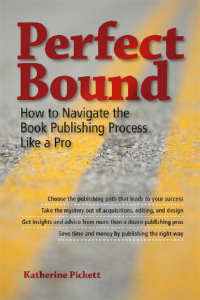 Note from Jane: If you enjoyed this post, check out Katherine Pickett’s Perfect Bound: How to Navigate the Book Publishing Process Like a Pro.
Note from Jane: If you enjoyed this post, check out Katherine Pickett’s Perfect Bound: How to Navigate the Book Publishing Process Like a Pro.
The post What Is a Developmental Editor and What Can You Expect? appeared first on Jane Friedman and was written by Katherine Pickett.
September 4, 2014
Is It the Golden Age for Journalism? [Smart Set]

Welcome to the weekly The Smart Set, where I share three smart pieces worth reading about the publishing and media industry. I also point to issues and questions raised, and welcome you to respond or ask your own questions in the comments.
“To seek: to embrace the questions, be wary of answers.”
—Terry Tempest Williams
Journalism Is Doing Just Fine, Thanks by Matthew Ingram
The top-line summary of this article says it all:
Some argue that the rise of the internet has destroyed — or severely crippled — journalism, but all it has really done is disrupted traditional mass-media business models. Journalism itself has never been healthier, and new players are finding new models.
I agree whole-heartedly. The health of journalism oughtn’t be tied to what’s happening to the business models for newspapers, magazines, or traditional/legacy outlets for journalism. (I wrote more about this here: Reasons to Be Optimistic During the Disruption of Publishing.)
Thoughts & questions:
Ingram himself asks, “If readers are being well served, and news reading has never been more popular, then why should we be concerned about the future of journalism?” Do you agree that readers are being well served? (We do know that news reading is up by all measures available to us, if you count—of course—online news reading.)
The business model for producing and distributing journalism is obviously changing. How concerned should we be about the death of the old business model?
Is it, in fact, the golden age for journalism, given the new opportunities presented by the internet?
The Tablet Magazine Has Been Flawed From the Start by Ricardo Bilton
Speaking of business model concerns: Magazines haven’t been doing all that great with their tablet editions. Bilton conducts an interview with Joe Zeff at ScrollMotion, who says:
There are some real opportunities to rethink the idea of a tablet magazine in order to recreate something that’s compelling. A tablet magazine should be smarter than the current set of publications. They should give me options about what content I receive and how and when it’s delivered. To do that, content has to be more modular. Today content is wrapped up in a magazine format, where everybody gets the same product. It really should be mixed and matched based on what works for me, not what works for the publisher. Content should be tied to where I am and what I’m doing, and become much more part of my regular routine.
Thoughts & questions:
I am a devoted reader of The New Yorker magazine’s tablet edition. I happen to think it’s superior to the print edition, though still flawed in many ways. Do you read any magazines solely on your tablet? Why or why not?
Is Buzzfeed a Tech Company? by Ben Thompson
In another thought-provoking post by Ben Thompson, he discusses the recent investment in Buzzfeed and comments on its desirability as a media company. One excellent point he makes is that Buzzfeed treats Internet-native formats like lists, tweets, pins, animated GIFs, etc., as equals to older formats like photos, videos, and long-form essays. He also applauds their use of native advertising. He concludes:
This is what makes BuzzFeed so interesting: absent legacy, media absolutely benefits from Internet economics as long as you can figure out effective monetization, and it’s possible BuzzFeed has done just that, and, just like their product, they have done so by abandoning that which primarily mattered in the old medium.
Thoughts & questions:
I wonder if native advertising is a flash in the pan, or something that will be a long-term and valuable source of revenue for publishing. For an alternate viewpoint on native ads (that is: far more negative than Thompson), check out Simon Dumenco’s Here’s What Else Is Wrong With Native Advertising.
The post Is It the Golden Age for Journalism? [Smart Set] appeared first on Jane Friedman and was written by Jane Friedman.
Jane Friedman
- Jane Friedman's profile
- 1882 followers



